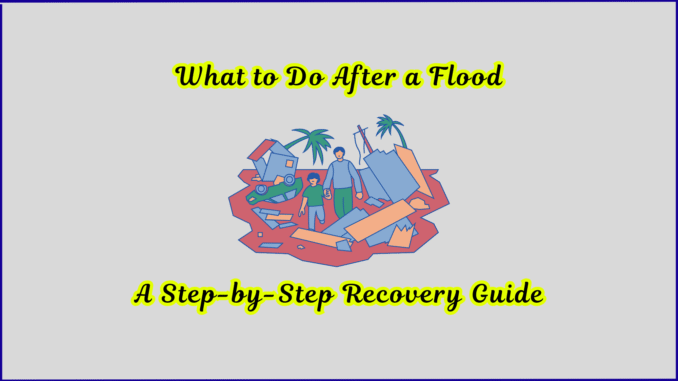
Introduction
Floods can cause severe damage to homes and pose serious health risks. Whether from storms, hurricanes, or burst pipes, knowing what to do immediately after a flood can help you stay safe, minimize damage, and speed up recovery.
This guide covers:
✔ Emergency safety steps
✔ Documenting damage for insurance
✔ Cleaning & preventing mold
✔ Filing a flood insurance claim
1. Ensure Safety First
Before re-entering your home:
✅ Wait for authorities to declare it safe (floodwaters may hide dangers like downed power lines or gas leaks).
✅ Turn off electricity & gas (if safe to do so) to prevent fires or explosions.
✅ Wear protective gear (boots, gloves, masks) – floodwater often contains sewage and chemicals.
Avoid walking in standing water (risk of electrocution or injury from debris).
2. Document the Damage for Insurance
Take these steps before cleaning:
📸 Photograph/video everything (structural damage, ruined belongings, water levels).
📝 Make a detailed inventory of damaged items (include receipts if possible).
📞 Contact your insurance company ASAP – flood claims often have strict deadlines.
Pro Tip:
-
Standard homeowners insurance does NOT cover floods—you need a separate FEMA flood policy.
-
If you don’t have flood insurance, check for FEMA disaster assistance at DisasterAssistance.gov.
3. Start Cleanup & Prevent Mold
Within 24–48 hours:
🚿 Pump out standing water (use a wet vacuum or professional service).
💨 Ventilate the house (open windows, use fans/dehumidifiers).
🔨 Remove soaked drywall, carpets, and insulation (mold grows quickly!).
🧼 Disinfect surfaces (use a bleach solution: 1 cup bleach + 1 gallon water).
Mold Warning:
-
Wear an N95 mask when handling moldy materials.
-
If mold covers more than 10 sq. ft., hire a professional.
4. File a Flood Insurance Claim
Follow these steps for a smoother process:
1️⃣ Call your insurer (or FEMA if you have NFIP coverage).
2️⃣ Submit proof of damage (photos, videos, inventory list).
3️⃣ Get a flood adjuster’s inspection (don’t make permanent repairs until then).
4️⃣ Keep receipts for temporary repairs (e.g., tarps, pumps).
Common Mistakes to Avoid:
-
Throwing away damaged items before documenting them.
-
Accepting the first settlement offer without reviewing it carefully.
5. Repair & Rebuild Safely
-
Hire licensed contractors (avoid scams—verify credentials at Contractor Check).
-
Elevate utilities (water heater, HVAC) if you’re in a flood-prone area.
-
Consider flood-resistant materials (e.g., tile instead of hardwood, waterproof drywall).
6. Prepare for Future Floods
✔ Install a sump pump with a battery backup.
✔ Raise electrical outlets at least 1 foot above potential flood levels.
✔ Keep gutters & drains clear to prevent water buildup.
Final Checklist
🔲 Safety first – avoid hazards, wear protection.
🔲 Document damage – photos, videos, inventory.
🔲 Contact insurance/FEMA – start claims process.
🔲 Clean & disinfect – prevent mold growth.
🔲 Rebuild smarter – flood-proof your home.
Leave a Reply